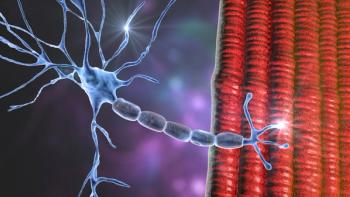
Advances in Predicting Tardive Dyskinesia
A prediction model may help identify treatment characteristics associated with TD among patients with psychiatric disorders taking antipsychotic medications.
RESEARCH UPDATE
A prediction model may
Antipsychotic medications have been extensively used to treat people with chronic mental illnesses, such as schizophrenia. These drugs, however, have also been associated with a wide range of adverse effects, including movement disorders, such as TD, a problem often seen as repetitive involuntary movements around the mouth and face.
TD is often irreversible and can be debilitating. “The symptoms can increase the social stigma of patients with comorbid psychiatric disorders, negatively impact quality of life, and potentially increase medical morbidity and mortality,” stated researchers, led by Oscar Patteron-Lomba, Manager, Analysis Group in Boston, MA. “An increased risk of developing tardive dyskinesia has been associated with factors such as older age, female sex, underlying mental illness, and long-term use and higher doses of antipsychotics.”
The association of TD with the use of typical versus atypical antipsychotics has been evaluated, with mixed results. No predictive models to assess the joint effect of clinical characteristics on TD risk have been developed or validated in the US.
Using a retrospective database analysis, Patterson-Lomba and colleagues1 identified a total of 189,415 patients; 66,723 with bipolar disorder; 68,573 with depressive disorder; and 54,119 with schizophrenia. These adult patients, who had 6 months of data prior to the index date, were identified from Medicaid claims from six US states. The index date was defined as the date of the first claim for an antipsychotic drug after a claim for the underlying disorder but before TD diagnosis.
The selected prediction model had a clinically meaningful concordance of 70% and was well calibrated. The researchers identified four treatment characteristics associated with TD. Patient’s age at index date, diagnosis of schizophrenia, dosage of antipsychotic at index date (up to 100 mg/day chlorpromazine equivalent), and presence of bipolar and related disorders were significantly associated with an increased risk of TD diagnosis. In addition, the use of atypical antipsychotics at index date was associated with a modest reduction in the risk of TD.
In conclusion, the researchers stated: “This study identified a group of factors associated with the development of tardive dyskinesia among patients with psychiatric disorders treated with antipsychotics. This may allow physicians to better monitor their patients receiving antipsychotics, allowing for the prompt identification and treatment of tardive dyskinesia to help maintain quality of life.”
Various strategies have been examined to reduce the cumulative exposure to antipsychotics, including dose reduction, intermittent dosing strategies, such as drug holidays, and antipsychotic cessation. A
References:
1. Patterson-Lomba O, Ayyagari R, Carroll B.
2. Bergman H1, Rathbone J, Agarwal V, Soares-Weiser K.
Newsletter
Receive trusted psychiatric news, expert analysis, and clinical insights — subscribe today to support your practice and your patients.

















